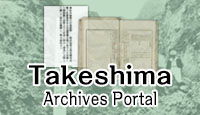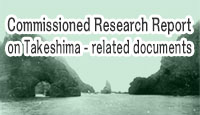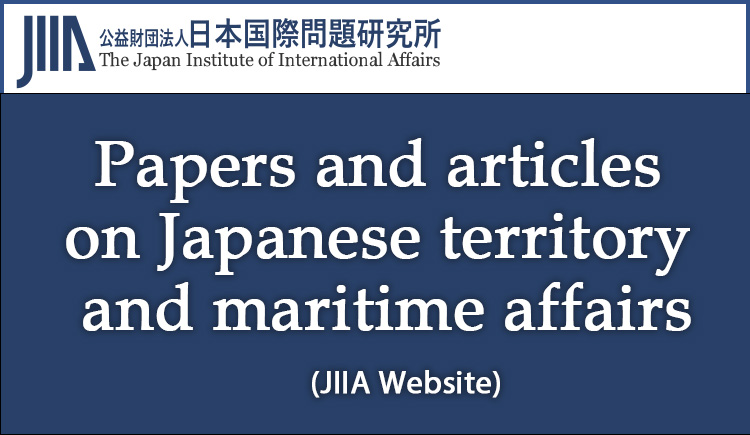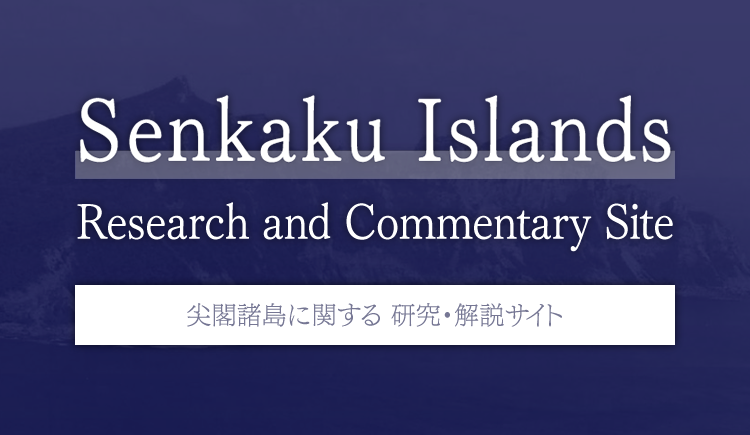The documents and materials published on this website were collected, researched, and prepared with advice from experts, as a part of a Government-commissioned project. The contents of this website do not reflect the views of the Government. Links to external sites (domains other than https://www.cas.go.jp) are not under the management of this site. For linked websites, please check with the organization/group that manages the website for the link in question.
Commentary on themes by historical period
Classification by historical periods III
Post WWII, before and after
the San Francisco Peace Treaty entered into force 1945-1952
(3) Moves towards the use of Takeshima after WWII
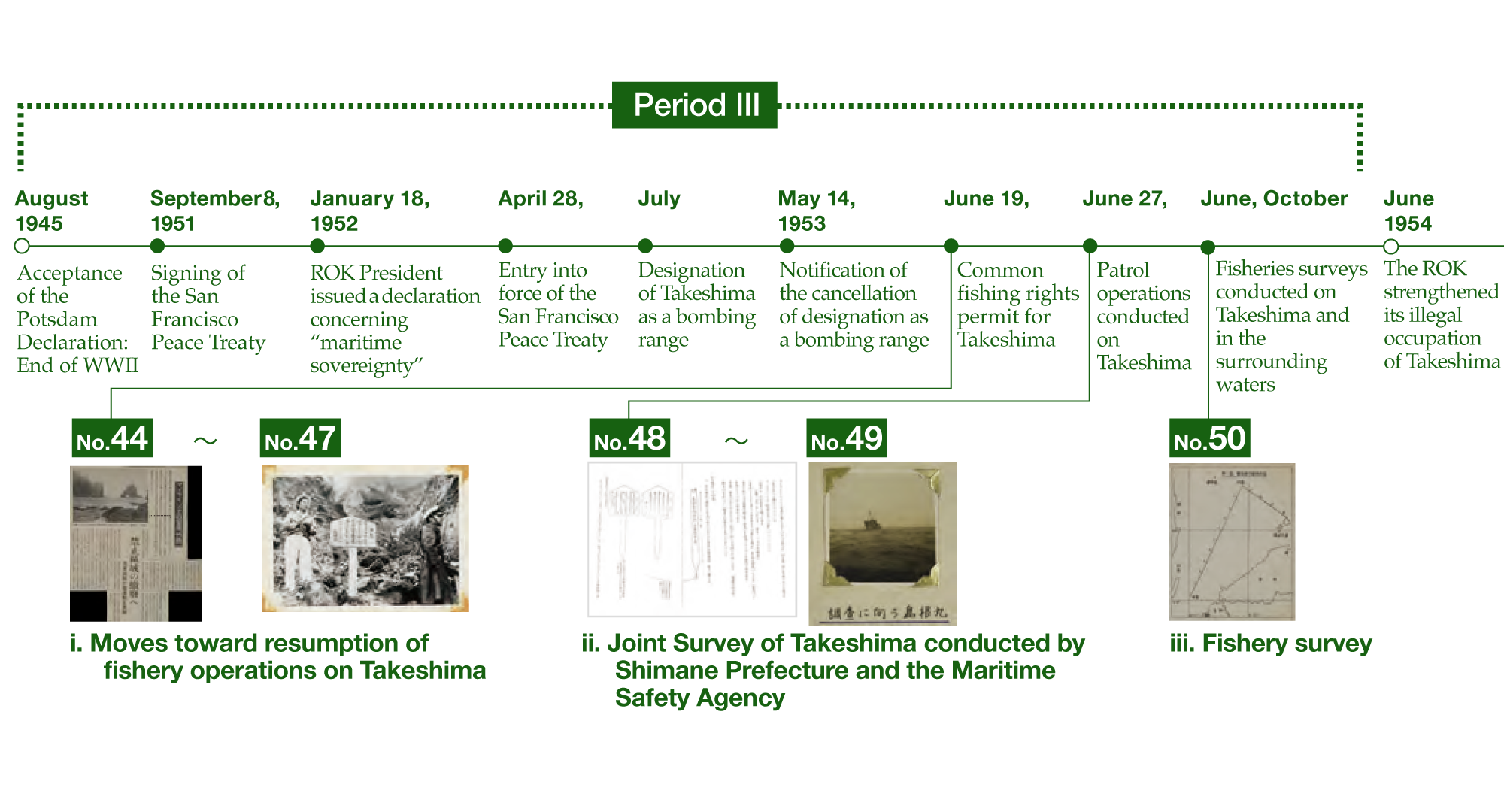
1. Moves towards the resuming of fishery operations on and around Takeshima
Under the American occupation after WWII, Japanese nationals were prohibited from approaching and
landing on Takeshima due to the so-called “MacArthur line.” Meanwhile, on
September 16, 1947, Takeshima was designated as a maritime bombing range for the U.S. Forces*1 , and
was so designated again on July 6, 1951No.33.
Under these circumstances, the fishermen of Oki who had been granted permission for sea lion
hunting before WWII demanded that fishing activities in Takeshima be resumed.No.44
No.45.
Following the signing of the San Francisco Peace Treaty on September 8, 1951, individual matters of
restrictions imposed on Japan began to be reviewed. The MacArthur line had been abolished prior to
the entry into force of the Peace Treaty on April 28, 1952. After restoration of Japan’s
sovereignty, Takeshima was again arranged to be provided as a bombing range for the U.S. Forces
under the Japan-U.S. Security Treaty. However, it was removed from the list of bombing ranges in
May, 1953No.36. As of January 25,
1953, Shimane Prefecture issued a permit of common fisheries rights on Takeshima*2 to the Oki
Islands Federation of Fisheries Co-operative Association (founded on January 25, 1953)
No.46. As for the sea lion
hunting on Takeshima, the Prefecture issued permits to three fishermen living in Oki - Tadashige
HASHIOKA, Kazuma YAWATA and Kuniyuki IKEDA (dated June 10, 1953).
2. Joint Survey of Takeshima conducted by Shimane Prefecture and the Maritime Safety Agency
On January 18, 1952, before the San Francisco Peace Treaty entered into force, the Republic of Korea declared the so-called “Syngman Rhee Line” on the high seas in violation of international law, and include Takeshima within the range of this area. After that, as it was confirmed that people from the Republic of Korea were landing illegally on Takeshima, Japanese authorities decided to enforce their control over the islands.
For example, from June 22 to June 28, 1953, the 8th Regional Maritime Safety Headquarters of the Maritime Safety Agency worked jointly with the Shimane Prefectural Government to conduct patrols to prevent stowaway and poaching activities around Takeshima. In these patrols officials discovered six South Koreans immediately after landing on Takeshima on June 27, and conducted interrogations. Accordingly, the officials warned them to leave Takeshima as they had illegally entered Japan’s territory, of which Takashima is a part of, and violated fishing regulations. (*1).
In our research, documents and materials related to this incident were confirmed, including the
mission report on the patrolNo.48, and photographs taken during the operation
No.47.
3. Fisheries Survey
After the San Francisco Peace Treaty entered into force, interest in fishery resources in the waters around Takeshima increased, and led to the start of the Survey for Development of Tsushima Warm Current from 1953, a five-year project subsidized by the Japanese government. This survey project was aimed at increasing fishery production in the waters where the Tsushima warm current travels north in the Sea of Japan, and involved fisheries research institutes from 19 prefectures, researchers who were commissioned from seven universities, and three research institutes affiliated with the National Fisheries Agency (*2).
In the survey conducted using the test ship “Shimane-maru” from the Shimane Prefecture Fisheries
Research Institute (*3), which participated in this survey, the New Ocean Bank (Shindo
Bank) was discovered 11 nautical miles east of Takeshima on June 16 of the same year. This raised
the possibility that the waters around Takeshima could be a fishing groundNo.49.
Furthermore, another participating organization, the Fukuoka Prefectural Fisheries Research
Institute (*4) conducted a survey to establish an observation line and observation points
extending from Oki to Takeshima, and confirmed the presence of sea lions around Takeshima. The
survey report prepared by the Fukuoka Prefectural Fisheries Research Institute provided concrete
details about fishery activities on Takeshima before WWIINo.50.
*1 The persons from the Republic of Korea did not have a powered boat on site, so
they were made to promise that they would leave once a boat came to take them home.
*2 Fisheries Agency, Survey Report for the Development of Tsushima Warm Current Vol.1
(Fishing Conditions/Sea Conditions) (1958), p.i
*3 Current Shimane Prefectural Fisheries Technology Center
*4 Current Fukuoka Fisheries And Marine Technology Research Center
Takeshima
Research and Commentary Site
- I Comprehensive issues
- II Commentary on themes by historical period
- III Analysis of claims by other countries

